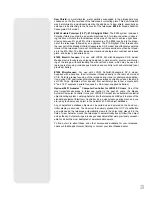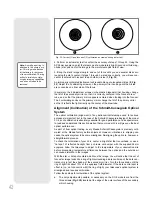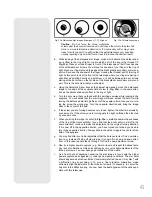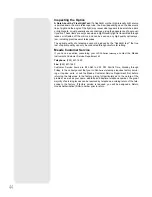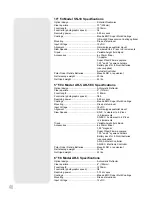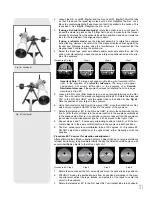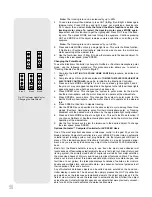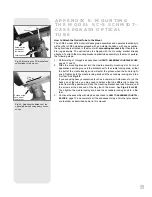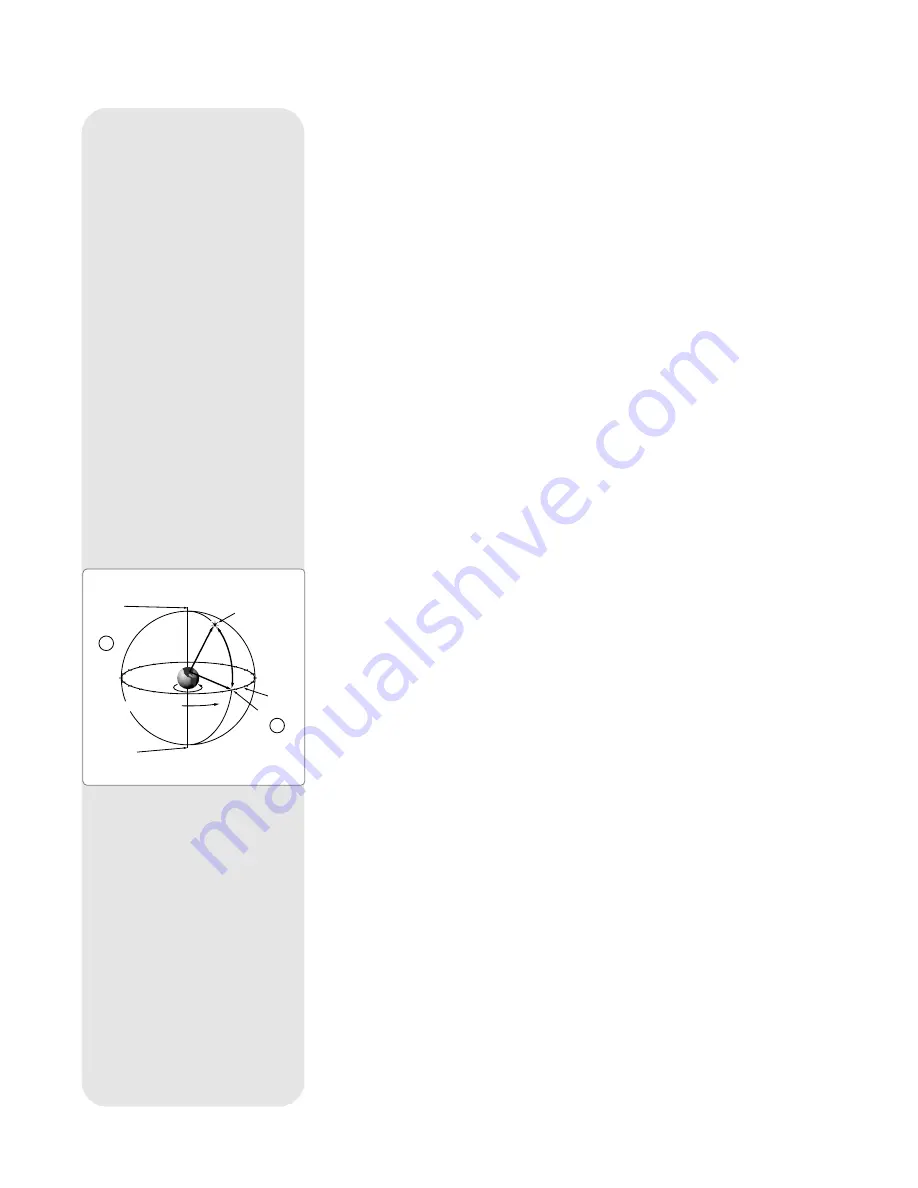
48
A celestial coordinate system was created that maps an imaginary sphere surround-
ing the Earth upon which all stars appear to be placed. This mapping system is simi-
lar to the system of latitude and longitude on Earth surface maps.
In mapping the surface of the Earth, lines of longitude are drawn between the North
and South Poles and lines of latitude are drawn in an East-West direction, parallel to
the Earth’s equator. Similarly, imaginary lines have been drawn to form a latitude and
longitude grid for the celestial sphere. These lines are known as Right Ascension
and Declination.
The celestial map also contains two poles and an equator just like a map of the Earth.
The poles of this coordinate system are defined as those two points where the Earth’s
north and south poles (i.e., the Earth's axis), if extended to infinity, would cross the
celestial sphere. Thus, the North Celestial Pole (1, Fig. 34) is that point in the sky
where an extension of the North Pole intersects the celestial sphere. The North Star,
Polaris is located very near the North Celestial Pole. The celestial equator (2, Fig. 34)
is a projection of the Earth’s equator onto the celestial sphere.
Just as an object's position on the Earth’s surface can be located by its latitude and
longitude, celestial objects may also be located using Right Ascension and
Declination. For example, you could locate Los Angeles, California, by its latitude
(+34°) and longitude (118°). Similarly, you could locate the Ring Nebula (M57) by its
Right Ascension (18hr) and its Declination (+33°).
■
Right Ascension (R.A.): This celestial version of longitude is measured in units
of hours (hr), minutes (min), and seconds (sec) on a 24-hour "clock" (similar to
how Earth's time zones are determined by longitude lines). The "zero" line was
arbitrarily chosen to pass through the constellation Pegasus — a sort of cosmic
Greenwich meridian. R.A. coordinates range from 0hr 0min 0sec to 23hr 59min
59sec. There are 24 primary lines of R.A., located at 15-degree intervals along
the celestial equator. Objects located further and further East of the zero R.A. grid
line (0hr 0min 0sec) carry higher R.A. coordinates.
■
Declination (Dec.): This celestial version of latitude is measured in degrees, arc-
minutes, and arc-seconds (e.g., 15° 27' 33"). Dec. locations north of the celestial
equator are indicated with a plus (+) sign (e.g., the Dec. of the North celestial pole
is +90°). Dec. locations south of the celestial equator are indicated with a minus
(–) sign (e.g., the Dec. of the South celestial pole is –90°). Any point on the celes-
tial equator (such as the the constellations of Orion, Virgo, and Aquarius) is said
to have a Declination of zero, shown as 0° 0' 0."
Setting Circles
Setting circles included with the
LXD55-Series
models permit the location of faint celes-
tial objects not easily found by direct visual observation. With the telescope pointed at
the North Celestial Pole, the Dec. circle (19, Fig. 1d) should read 90° (understood to
mean +90°). Each division of the Dec. circle represents a 1° increment. The R.A. cir-
cle (31, Fig. 1d) runs from 0
hr
to (but not including) 24
hr
, and reads in increments of
5
min
.
Using setting circles requires a developed technique. When using the circles for the
first time, try hopping from one bright star (the calibration star) to another bright star
of known coordinates. Practice moving the telescope from one easy-to-find object to
another. In this way, the precision required for accurate object location becomes evi-
dent.
Note You may also enter an object's R.A. and Dec. coordinates using the
"User: Objects" option of Autostar's Object menu. Autostar then automat-
ically slews the telescope to the entered coordinates.
To use the setting circles to locate an object not easily found by direct visual
observation:
Insert a low-power eyepiece, such as a 26mm, into the focuser assembly. Pick out a
bright star with which you are familiar (or is easily located) that is in the area of the
sky in which your target object is located. Look up the R.A. coordinate of the bright
14
15
16
17
18
19
20 21
22
23
0
1
12
11
10
9
8
7
5
6
4
3
2
13
Earth’s
Rotation
0 Dec.
South
Celestial
Pole
Right Ascension
Star
Celestial
Equator
-90 Dec.
+90 Dec.
North
Celestial
Pole
(Vicinity
of Polaris)
D
e
cli
n
a
tio
n
1
2
Fig. 34: Celestial Sphere.
APPENDIX A: CELESTIAL
COORDINATES
Summary of Contents for LXD55 Series
Page 1: ...Meade Instruments Corporation Instruction Manual LXD55 Series Telescopes...
Page 2: ......
Page 63: ......






